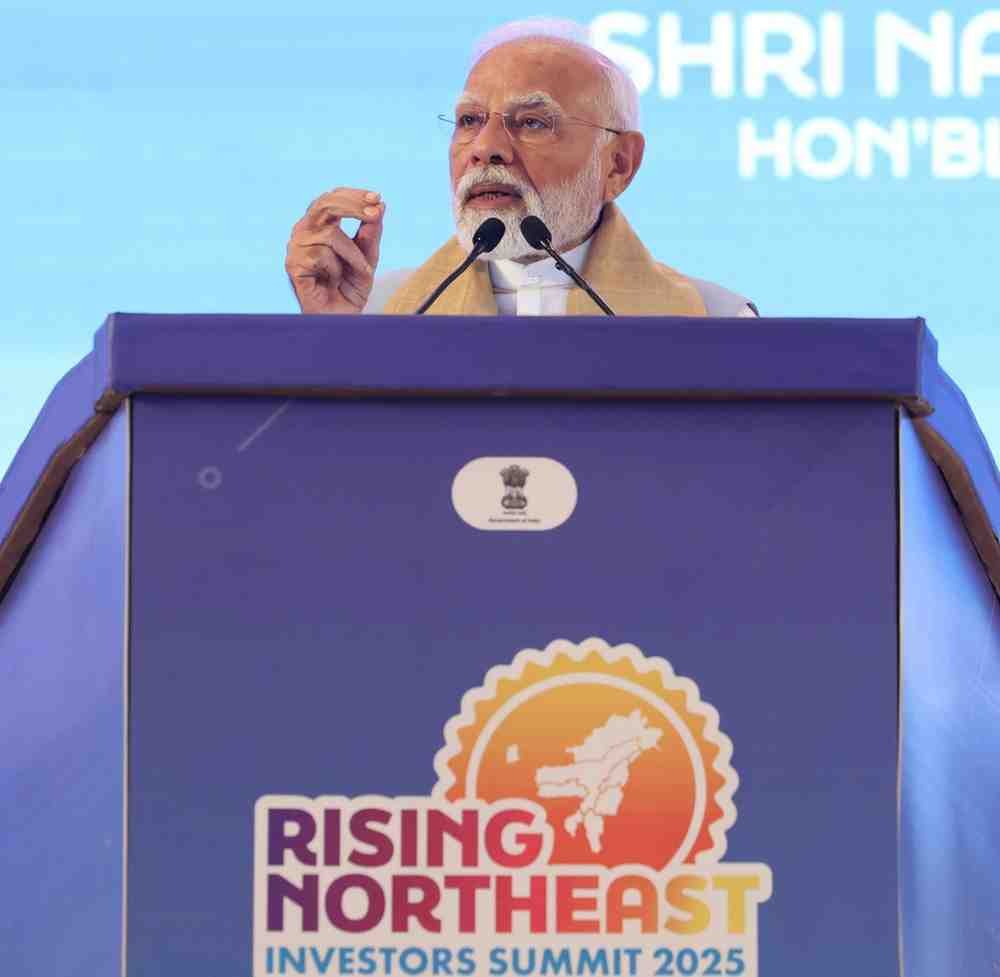For decades, the Northeast region of India stood at the margins of mainstream development discourse. Marked by insurgency, ethnic tensions, and geographical isolation, it was often seen as a “conflict zone” rather than a region of strategic and cultural significance. However, over the past eleven years, a quiet revolution has reshaped the face of Northeast India.
Under the dynamic leadership of Prime Minister Narendra Modi, the Northeast has undergone a remarkable transformation—emerging from isolation to integration, from unrest to rejuvenation. This change has been driven by a strategic triad: Culture, Commerce, and Connectivity.
A Vision Realized: Reform, Perform, Transform
The Modi government’s development mantra—”Reform, Perform, and Transform”—has found one of its most visible manifestations in the Northeast. Once labelled a “No-Go” zone, the region is now fast becoming a hub of tourism, trade, and transnational cooperation.
The game-changer? Connectivity—in every sense of the word. The expansion of road, rail, air, water, and digital infrastructure has laid the foundation for inclusive development and economic opportunity. But more than just logistics, it’s about people—bringing communities closer, fostering national integration, and opening doors to global partnerships.
From the Periphery to the Pivot
Despite India’s declared “Look East” and later “Act East” Policy since the 1990s, the Northeast remained largely neglected, treated merely as a geopolitical corridor. Connectivity projects were mired in red tape, underfunded, and poorly executed.
What changed post-2014 was vision with implementation. The NDA government increased the budget allocation for the Northeast by over 300%—from ₹36,108 crore in 2014 to ₹94,680 crore in 2024. More importantly, it monitored and completed long-pending projects while initiating new ones with multinational support.
International forums like Quad, BIMSTEC, G20, SCO, and policies like Neighbourhood First and Act East have reinforced the strategic centrality of the Northeast in India’s foreign policy.
Ground Realities: My Personal Witness
I recall my first academic trip to Dibrugarh over a decade ago. What should have been a scenic journey turned into a three-day ordeal due to poor connectivity and security concerns. Fast forward to January 2025—smooth roads, clean railway stations, and seamless air connectivity welcomed me. Conversations with locals confirmed what I saw—development has finally arrived.
A cab driver in Upper Assam proudly shared how his daughter had just returned from a youth camp in Pune, while a group of students on a train journey to Delhi exemplified how increased mobility has empowered the youth.
The Northeast’s vibrant cultural heritage is now being showcased at national stages—such as the Ashtalakshmi Mahotsav at Delhi’s Bharat Mandapam—turning the spotlight on the region’s untapped potential.
Connecting the Dots: Key Strategic Projects
1. Kaladan Multimodal Transit Project (KMTTP)
- A $484-million initiative connecting Mizoram to the Sittwe Port in Myanmar.
- Combines waterways, roadways, and shipping routes.
- Bridges India to Southeast Asia, bypassing the Chicken’s Neck corridor.
2. India-Myanmar-Thailand Trilateral Highway
- A 1,360-km four-lane project connecting Moreh (Manipur) to Mae Sot (Thailand).
- Enhances trade, tourism, and regional integration.
- Over 70% complete, despite political turbulence in Myanmar.
3. India-Myanmar Land Connectivity
- Bus service launched between Imphal and Mandalay.
- Land Custom Stations and Border Haats facilitate trade and cultural exchange.
- Bilateral trade with Myanmar reached $1.75 billion in 2023.
4. Bangladesh: India’s Gateway to the Bay
- New bus routes: Agartala–Dhaka–Kolkata and Guwahati–Dhaka.
- Rail link: Agartala–Akhaura project reduces travel time significantly.
- Access to Chittagong Port and development of a multi-modal transshipment hub at Jogighopa, Assam.
Local for Global: Reviving Historical Trade Routes
Ancient pathways like the Stilwell Road are being revived. The Pangsau Pass International Festival, held in January 2025, celebrated this legacy in Arunachal Pradesh. These cultural and commercial revivals blend traditional knowledge with modern aspirations.
Digital and Commercial Connectivity
Connectivity isn’t just physical—digital networks, energy grids, and cross-border power-sharing are shaping a more inclusive growth model. Broadband internet, mobile services, and power availability are reaching previously untouched villages.
Beyond Numbers: A Change in Mindset
“Good governance with good intentions is the hallmark of this government. Implementation with integrity is its core passion.” This philosophy reflects not just in policy papers but on the ground. Development in the Northeast today is measurable, visible, and most importantly, believable. Where once the region was viewed through the lens of conflict, it is now seen as India’s bridge to Southeast Asia, a gateway for diplomacy, and a model of transformation.
The Road Ahead
This transformation is not the end—it is the beginning. The foundation has been laid, and the momentum is strong. The only question that remains is how soon can we harness the full potential of this connectivity revolution? The Northeast is no longer a distant frontier it is India’s new frontier of opportunity.








